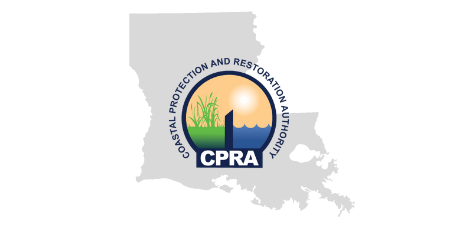Sign Up. Stay Informed.
June 14, 2023
Contact: coastal@la.gov
BATON ROUGE, La. – The National Oceanic and Atmospheric Administration (NOAA) has accepted Governor John Bel Edwards’ nomination of the Atchafalaya River System as the preferred site of a National Estuarine Research Reserve (NERR) in Louisiana.
“This is an important step in protecting and preserving the Atchafalaya River System and Louisiana’s dynamic waterways,” said Gov. Edwards. “With this designation, Louisiana will no longer be the only coastal state without a National Estuarine Research Reserve site, and the additional resources and support for research, education, and conservation efforts will ensure that this critical ecosystem is managed sustainably for future generations.”
Gov. Edwards designated the Louisiana Coastal Protection and Restoration Authority, the state’s leading authority on coastal and estuarine issues, to collaborate with NOAA, with ongoing assistance from Louisiana State University and A&M College and Louisiana Sea Grant, in completing the remaining steps necessary to designate the Atchafalaya River System as the preferred location of Louisiana’s NERR. The Louisiana Universities Marine Consortium (LUMCON) has been selected as the managing entity of the State’s NERR.
“The addition of the Atchafalaya River System presents a unique research opportunity, and it also stands to connect Louisianans with science, so they can learn more about the place they call home,” said CPRA Chairman Chip Kline. “We are thrilled to have the expertise that LUMCON will bring to our NERR and look forward to watching its transformation into a living laboratory.”
Commissioner of Higher Education Dr. Kim Hunter Reed said, “The NERR is an important component in Louisiana’s understanding of and response to present and future environmental challenges facing our state. We are proud of higher education’s major contribution to the NERR’s establishment and that LUMCON, a collaboration that includes all higher education institutions across Louisiana, was selected to bring their collective expertise to daily management of the NERR’s important work.”
The Atchafalaya Basin is considered the nation’s largest river swamp and is a continuously growing wetlands system. As a designated NERR site, this area will receive funding and assistance from NOAA to support research, monitoring, education, and community outreach initiatives.
“The Atchafalaya Basin, highlighting all of the habitats found within the state and serving as a model for how the state and other deltaic systems are formed, is a truly unique addition to the NERR system,” said Dr. Brian Roberts, Executive Director and Chief Scientist of LUMCON. “LUMCON is thrilled that the preferred site has been approved and the Consortium and member institutions are excited to work with partners at the local, state, and federal levels to develop and manage what will be a highlight of the national NERR system.”
Gov. Edwards began the process of establishing a NERR in coastal Louisiana with a letter to NOAA in July of 2019. Over twenty-four months, LSU and Louisiana Sea Grant assisted the state in evaluating potential sites in the Atchafalaya, Barataria, and Pontchartrain Basins, engaging over 70 volunteers across state and federal agencies, universities, and non-governmental organizations on four committees. In addition, nine public town hall meetings were held to engage stakeholders, and letters of support were collected from a cross-section of public and private interests.
The next steps involve Louisiana aiding NOAA in producing a draft environmental impact statement to assess the nominated location and its alternatives, as well as examining potential impacts of designating the location as a research reserve. Furthermore, the state will initiate preparations for a draft management plan. NOAA has issued pre-designation funds, matched by the state, to facilitate both tasks. This upcoming stage will ensure compliance with all relevant Federal and state environmental regulations. While NOAA accepts the state’s nomination, federal designation is still contingent on successful completion of the EIS and management plan, as well as adequate appropriations to support a new reserve site in Louisiana.
###

